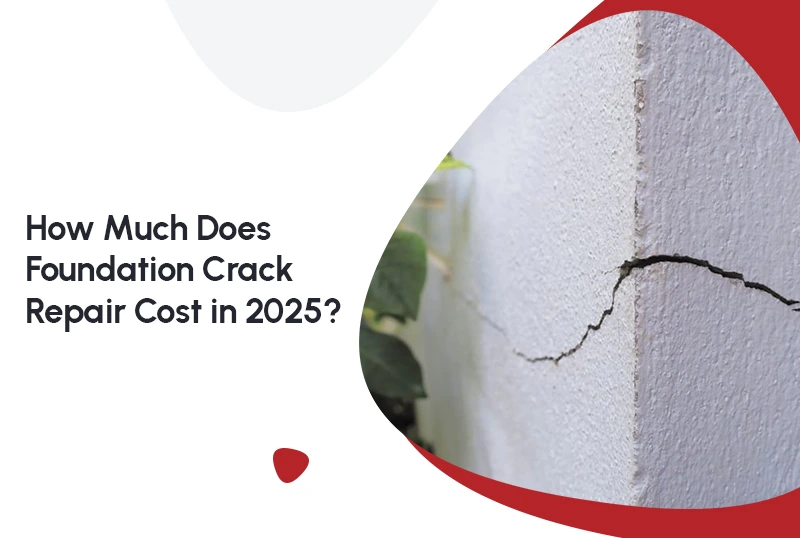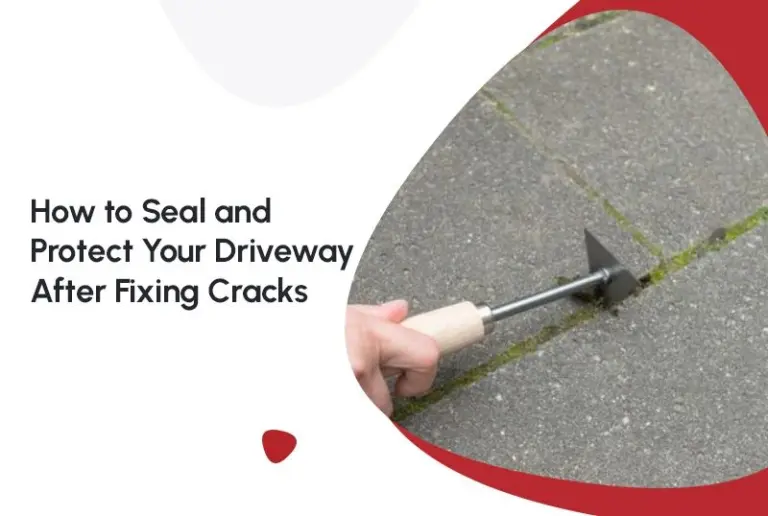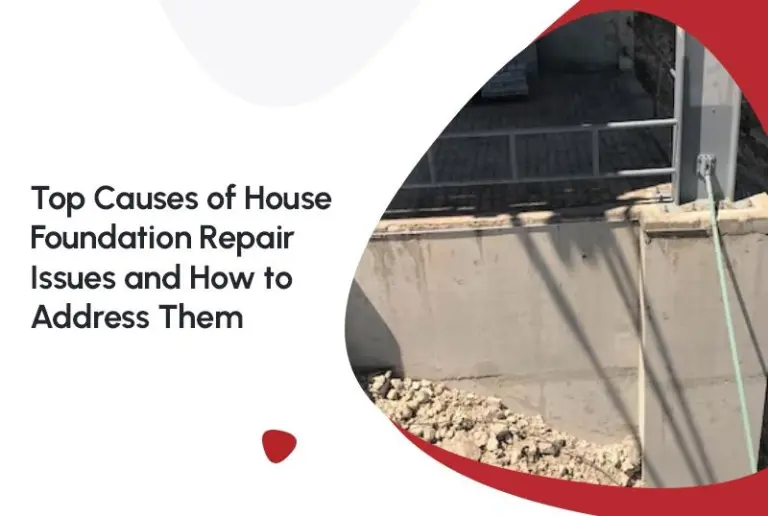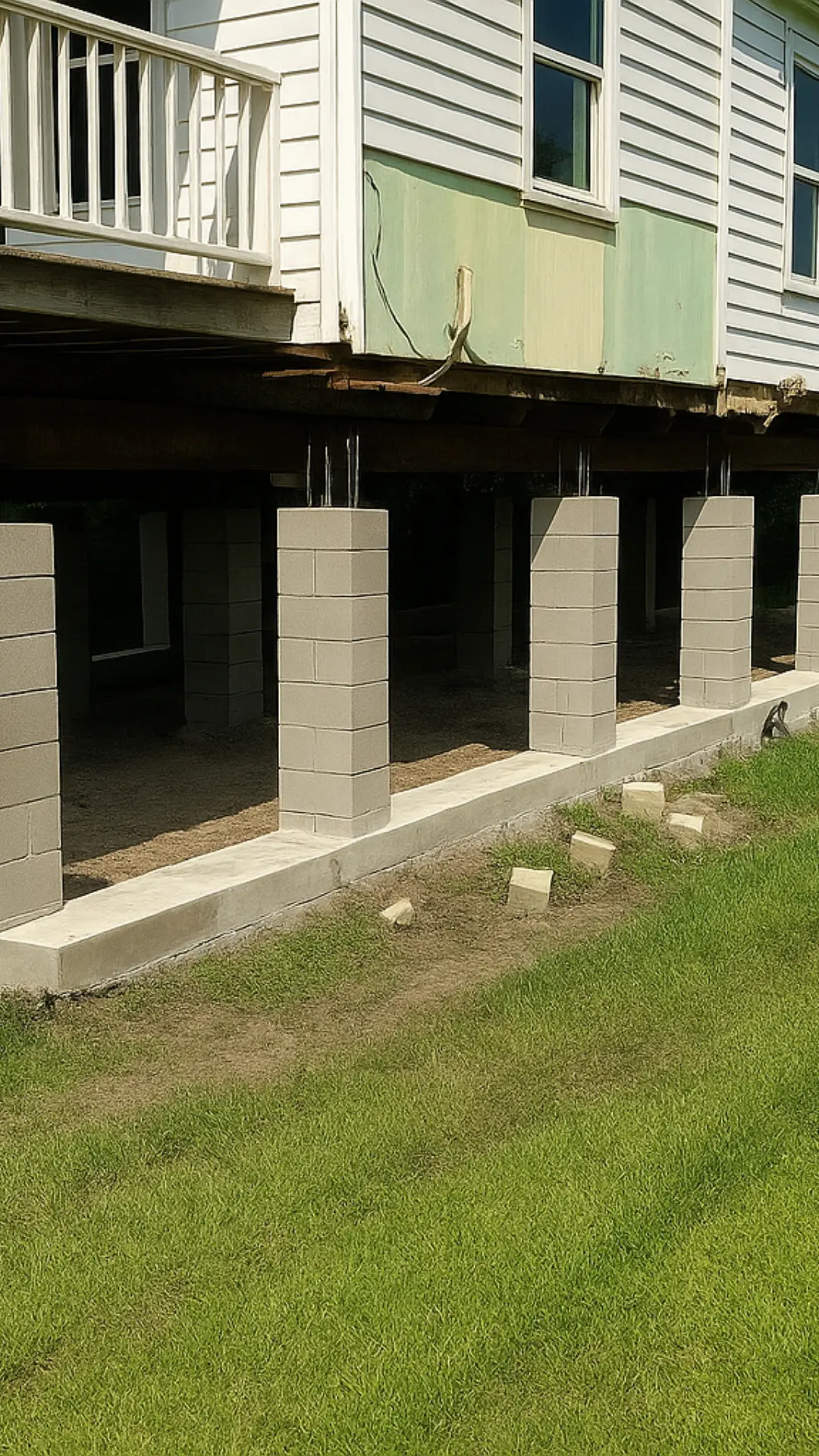Whether your home rests on a pier and beam foundation or a concrete slab, cracks signal serious structural risks. Understanding the foundation crack repair cost in 2025 helps you budget accurately. Rising material and labor prices mean costs vary widely by method, crack size, and local labor rates. This guide covers common causes, repair options like epoxy injection, polyurethane foam, concrete jacking, and underpinning. You will learn how to compare estimates, choose qualified contractors, and implement preventative measures to protect your investment and streamline fixing house foundation tasks.
Why Foundation Cracks Happen

Soil Settlement
Soil settlement occurs when the soil beneath the foundation shifts unevenly, causing the foundation to move. This movement creates stress points, eventually leading to cracks in the concrete. Poor soil compaction or natural settling over time can exacerbate this issue. Even small shifts can cause large cracks, undermining the foundation’s stability.
Hydrostatic Pressure
Hydrostatic pressure happens when water builds up around the foundation, particularly during heavy rainfall or improper drainage. The water exerts pressure against the foundation walls, expanding small fissures into cracks. Poor drainage and high water tables increase the risk of hydrostatic pressure, making foundation cracks repair cost a common concern in areas with frequent wet conditions.
Temperature Fluctuations
In areas with freeze-thaw cycles, temperature fluctuations can damage foundations. As water trapped in the concrete or soil freezes, it expands, creating micro-cracks. When the temperature rises, the concrete contracts, worsening the cracks. This constant expansion and contraction weaken the foundation over time, especially in older concrete structures that weren’t designed to withstand such conditions.
Poor Construction
Subpar construction practices are another common cause of foundation cracks. Insufficient reinforcement or improper concrete mixtures can weaken the foundation. If the foundation wasn’t properly cured or reinforced with adequate materials, it may not have the strength to endure normal stress, leading to cracking over time.
Understanding the Root Cause
Identifying the root cause of foundation cracks is essential for selecting the right repair method. Whether it’s soil settlement, hydrostatic pressure, temperature fluctuations, or poor construction, diagnosing the issue ensures a more effective long-term solution. For instance, if the problem is hydrostatic pressure, addressing drainage and waterproofing may be necessary, while soil settlement may require foundation leveling or underpinning.
Correctly identifying the cause not only leads to better repairs but also helps avoid future damage. Always consult with a foundation expert to ensure that the underlying issue is addressed properly, preventing recurring problems.
Common Repair Methods
Epoxy Injection
Epoxy seals hairline and structural cracks by bonding concrete edges. Contractors drill ports along the crack and inject resin under low pressure. Once cured, epoxy restores up to 80% of original concrete strength.
- Cost: $300–$600 per crack
- Best for: Non-leaking, static cracks
Tip: Epoxy resists oil, chemicals, and abrasion.
Polyurethane Foam Injection
Polyurethane foam expands to fill voids and stop active leaks. Technicians inject a flexible resin that hardens into a foam gasket. This solution handles water intrusion better than epoxy alone.
- Cost: $500–$1,000 per crack
- Best for: Wet or actively leaking cracks
Tip: Foam expansion can lift slightly settled slabs.
Concrete Jacking (Mud Jacking)
Concrete jacking lifts sunken slabs by pumping a grout mix beneath them. After drilling small holes, crews inject a sand-cement grout that raises the slab to level. This method corrects settlement and reduces new crack formation.
- Cost: $800–$2,000 per lift
- Best for: Uneven floors and settlement issues
The foundation crack repair cost for concrete jacking reflects extra labor to drill holes and pump grout.
Underpinning
Underpinning installs new piers or beams beneath the foundation to stabilize deeper soil problems. Contractors excavate and pour concrete beneath existing footers or use steel push piers driven to bedrock.
- Cost: $1,000–$4,000 per pier
- Best for: Significant settlement or failing footers
Tip: Underpinning often carries a longer warranty due to its permanent nature.
Cost Breakdown and Comparison
| Repair Method | Price Range | Ideal For | Key Benefit |
| Epoxy Injection | $300–$600/crack | Static, narrow cracks | Restores concrete strength |
| Polyurethane Foam | $500–$1,000/crack | Active leaks | Waterproof seal |
| Concrete Jacking | $800–$2,000/lift | Settled slabs | Leveling and stabilization |
| Underpinning | $1,000–$4,000/pier | Major settling | Deep soil support |
When estimating foundation crack repair cost, factor in site access, permit fees, and contractor mobilization charges. In some cases, combining crack sealing with Concrete Slab Foundation Repair improves long-term performance.
DIY vs. Professional Repairs
- DIY Kits cost $100–$200 and suit hairline, non-structural cracks.
- Professional Services start at $300 per crack and include warranties, inspections, and clean-up.
While DIY can lower out-of-pocket expenses, it carries risks. Improper preparation or application may void warranties and trigger repeat repairs. Licensed contractors guarantee work quality and often offer multi-year warranties.
Tips to Reduce Repair Expenses
- Inspect Early
Fix small cracks promptly. Early action slashes material and labor needs. - Bundle Repairs
Address multiple cracks or sections in one visit to cut mobilization fees. - Compare Quotes
Request detailed, line-item estimates from at least three contractors. - Improve Drainage
Direct downspouts and grading away from foundations to prevent water buildup. - Regular Maintenance
Seal exterior cracks and control landscaping near the foundation to minimize soil shifts.
Smart planning lowers your overall foundation crack repair cost and enhances structural longevity.
Budgeting Your Project
| Expense Item | Estimated Cost |
| Crack Sealing Kits | $100–$200 |
| Single Crack Injection | $300–$600 |
| Leak-Sealing Foam | $500–$1,000 |
| Slab Lifting | $800–$2,000 |
| Underpinning Pier | $1,000–$4,000 |
| Permits & Inspections | $150–$500 |
| Total Project Cost | $1,000–$10,000 |
Sites with multiple large cracks or severe settlement can exceed $10,000. Smaller jobs on easily accessible slabs often stay under $2,000.
Prevention and Long-Term Care
After repair, schedule annual foundation inspections. Address gutter blockages, landscape changes, or tree roots near your home. Preventative measures form a key part of fixing house foundation health. For ongoing slab issues, routine Concrete Leveling can preempt costly repairs and maintain a level floor.
Conclusion
Foundation crack repair cost will be around $300 to over $4,000 per method, depending on severity, location, and technique. By comparing epoxy injections, foam sealing, concrete jacking, and underpinning, you can choose the right balance of cost and durability. Early intervention, combined repairs, and proactive drainage work, will minimize long-term expenses. With smart planning, you can control the foundation crack repair cost and secure your home’s structural integrity for years to come.
(FAQs) Frequently Asked Questions
1. How much does house foundation crack repair cost?
Foundation crack repair cost can range from $500 to $5,000, depending on the severity of the crack and the method of repair. For minor cracks (hairline or non-structural), epoxy injections or polyurethane foam can cost around $300 to $800. For more significant cracks that affect the structure, more extensive repairs such as piering or underpinning may be required, costing anywhere between $3,000 and $10,000 or more.
2. Are foundation crack repair costs covered by insurance?
Foundation crack repair cost are generally not covered by standard homeowners insurance unless the damage is caused by a covered peril, such as fire, sudden plumbing failure, or earthquakes. Foundation damage from poor soil conditions, settling, or water damage due to neglect is typically excluded. However, some insurers may offer additional riders or endorsements for foundation issues.
3. What does a concerning foundation crack look like?
A concerning foundation crack is typically wide, horizontal, or jagged. These types of cracks may suggest structural issues such as shifting soil, hydrostatic pressure, or settling foundations. Stair-step cracks in masonry or vertical cracks over ¼ inch in width are red flags. If you notice cracks combined with uneven floors or sticking doors, it’s important to have the foundation inspected immediately.
4. Can a crack in a foundation be repaired?
Yes, most cracks in a foundation can be repaired. Minor cracks (under 1/8 inch wide) can be sealed using epoxy or polyurethane injections, while more serious cracks, such as those in load-bearing walls, may require structural reinforcement like steel piering or carbon fiber straps. The method used depends on the crack’s size, depth, and cause.
5. Is foundation crack repair cost expensive?
Foundation crack repair cost depends on the severity of the crack and the method of repair. Minor repairs for hairline cracks are relatively inexpensive, costing $500 to $1,500. Major foundation crack repair cost, including leveling and stabilizing a sinking foundation, can cost between $3,000 and $10,000, with severe issues potentially reaching $20,000 or more. The earlier you address foundation cracks, the less expensive the foundation crack repair cost will likely be.
6. Can you live in a house with a cracked foundation?
Yes, you can live in a house with a cracked foundation, but it depends on the severity of the crack. Small, non-structural cracks can be repaired and won’t affect the house’s safety. However, larger cracks that affect the structure (especially horizontal cracks or those wider than ¼ inch) should be addressed immediately, as they can lead to more significant issues like uneven floors, wall damage, or water infiltration.
7. How to tell if a foundation crack is serious?
To determine if a foundation crack is serious, consider the following:
- Width: Cracks wider than ¼ inch are more concerning.
- Location: Horizontal cracks or cracks near windows and doors are particularly serious.
- Progression: If cracks are growing or you notice new ones, it’s a sign of a shifting foundation.
- Other symptoms: Check for sticking doors, uneven floors, or water seepage around the crack, all of which indicate a more significant issue.
8. What size of foundation crack is a concern?
Cracks that are larger than ¼ inch should be considered a concern. These cracks may indicate structural issues such as settling or hydrostatic pressure. Horizontal or diagonal cracks are more concerning than vertical cracks because they often indicate a larger issue such as soil movement or foundation instability. It’s best to consult a professional for any crack that grows larger over time.
9. How can you tell if a crack is structural?
To tell if a crack is structural, look for the following indicators:
- Location: Cracks near load-bearing walls or corners are more likely to be structural.
- Type: Horizontal or diagonal cracks usually indicate structural stress.
- Size: Cracks wider than ¼ inch or cracks that continue to grow.
- Symptoms: Accompanying signs of uneven floors, door or window misalignment, or severe bowing in walls can indicate structural damage.
10. What’s the best time of year for foundation repair?
The best time of year to repair a foundation is during the spring or fall when temperatures are mild. Extreme heat or cold can affect the curing of foundation repair materials and can also make soil conditions more unstable. Avoid scheduling repairs during the winter when freeze-thaw cycles can affect the foundation’s stability, or during the summer when excessive heat can cause the soil to dry out and shrink.







